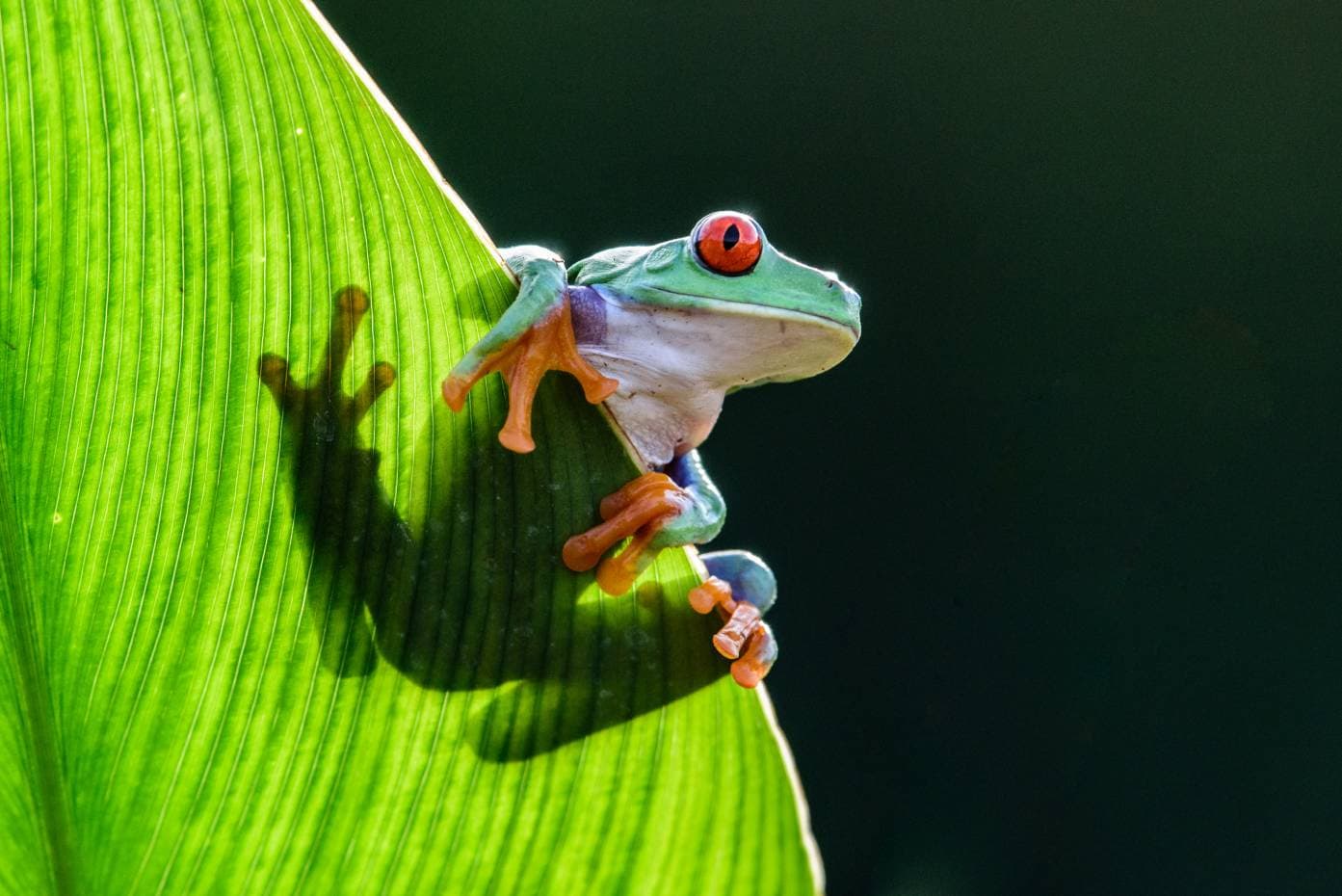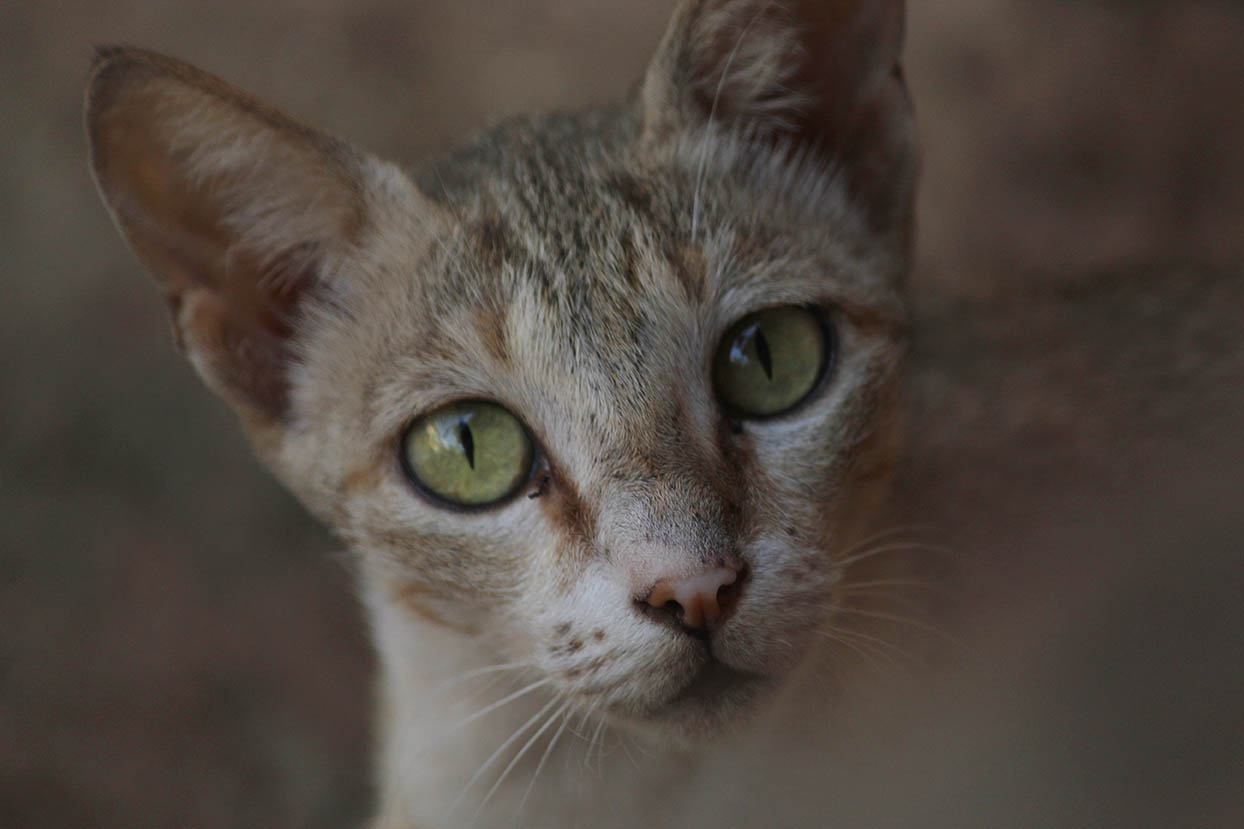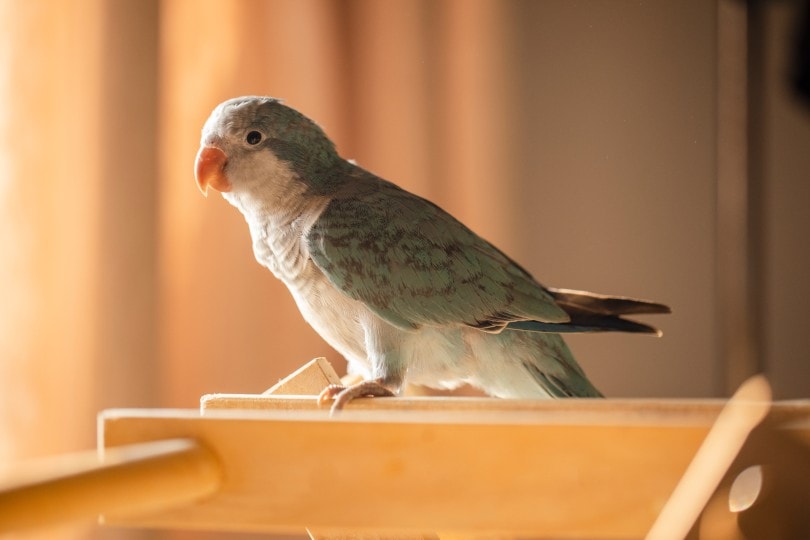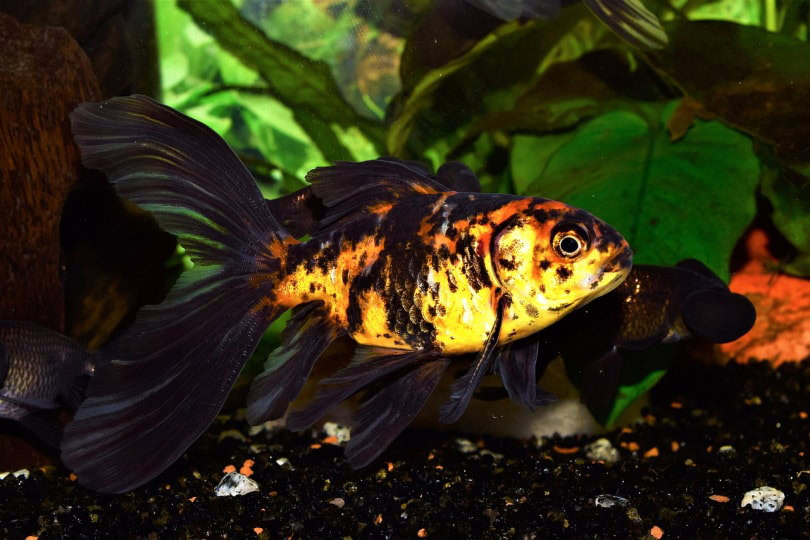Click to Skip Ahead
If you’ve ever had a tree frog as a pet, you know that they hop right into your heart and quickly become one of the most beautiful pets you’ve owned. The Red-eyed tree frog is known for their crimson red eyes, slim bodies, and bright bodies to warn their prey.
They are one of the most well-known species in the world. They’re native to Central and South America and spend their days bouncing from tree to tree in the rainforests. Red-eyed tree frogs have few demands, which makes them a fun and unique pet.

Quick Facts About the Red-Eyed Tree Frog
| Species Name: | Agalychnis callidras |
| Family: | Phyllomedusidae |
| Care Level: | Moderate |
| Temperature: | 75°F to 85°F |
| Temperament: | Easily startled |
| Colors: | Green bodies with blue, yellow, and orange markings. |
| Lifespan: | 5–10 years |
| Size: | 2-3 inches long |
| Diet: | Insects |
| Minimum Tank Size: | 15–20 gallons |
| Tank Set-Up: | Tall terrarium with bark substrate and plants to climb |
Red-Eyed Tree Frog Overview
You’ll find Red-eyed tree frogs throughout Veracruz, Nicaragua, Panama, Costa Rica, and some parts of South America, so why did somebody decide to bring these frogs to North America? Tree frogs are an arboreal species, so they spend a large portion of their lives in trees. Their vivid green bodies with unique markings are captivating, and most frog owners enjoy watching them move around in their enclosures.
Red-eyed tree frogs are nocturnal and primarily awake at night, but that doesn’t mean you won’t see how they move and explore their enclosure. Tree frogs get a little skittish with too much handling. After all, they are prey for several animals, but you still get to observe them close up and handle them occasionally.
On average, they live for 8 years under human care. If you love frogs, snakes, or lizards, the Red-eyed tree frog might be an animal you’d consider bringing into your home.
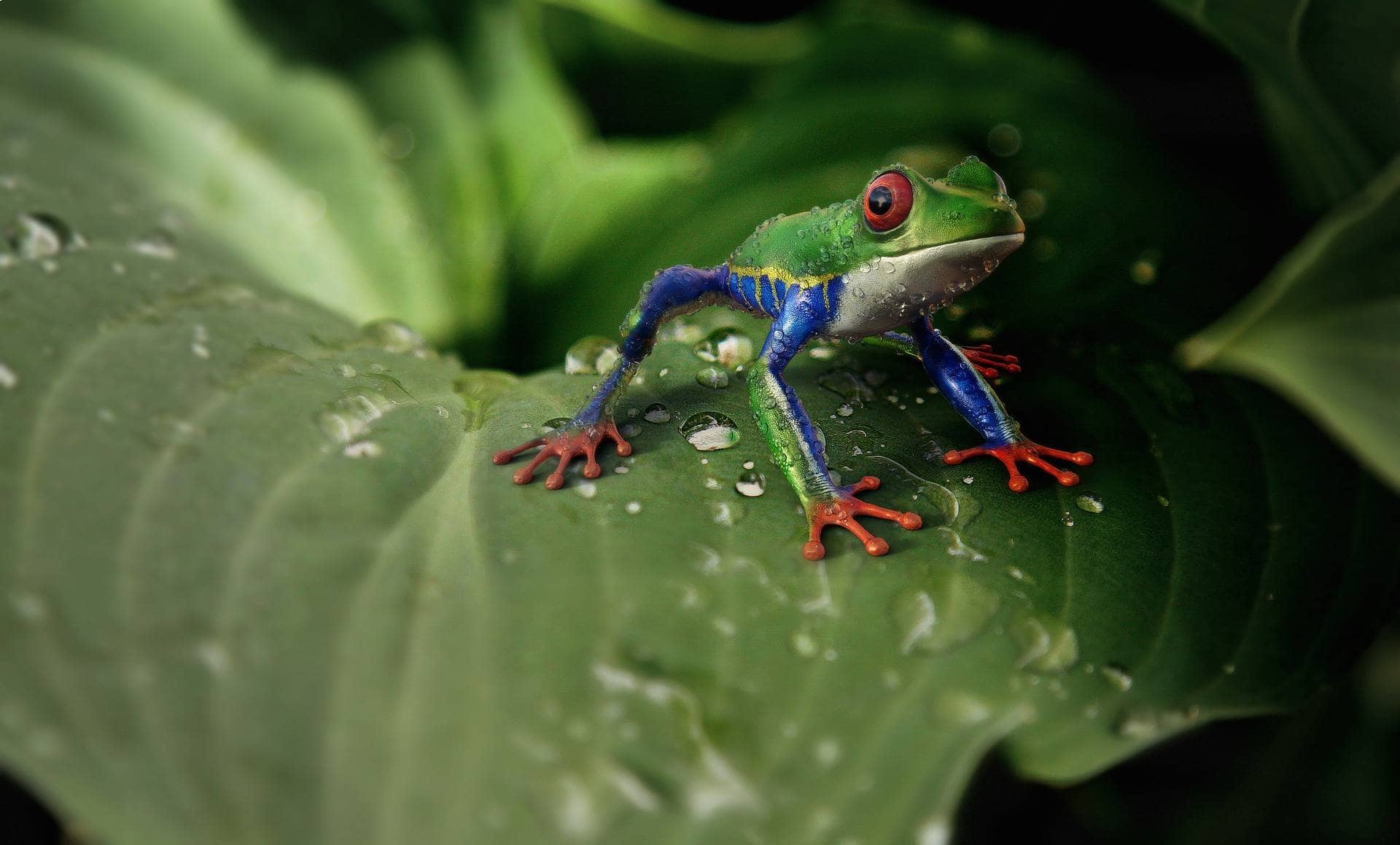
How Much Do Red-Eyed Tree Frogs Cost?
Before you even consider buying a Red-eyed tree frog, do as much research as possible to understand the type of animal you’re working with and their needs. Get information from valuable sources like pet store personnel or professionals who work with these animals every day. If you’ve made up your mind, search for a reputable seller and be prepared to travel a little way to get them. It is possible to buy the frogs online, but we recommend finding a local pet store that specializes in reptiles or amphibians.
A Red-eyed tree frog costs anywhere from $40 to $200. Shop around to find a cost that seems reasonable for your budget and ensure that the frog is healthy before bringing them home.
Typical Behavior & Temperament
Red-eyed tree frogs are nocturnal and spend most of the day resting. If they spot a predator or get startled, their eyes pop open to startle the predator, and then they quickly hop away to safety in a nearby hiding spot.
They make the most noise when they are performing their mating song. The men perform loud croaks to attract females. These frogs aren’t fans of being handled too much. Four or five minutes is more than enough for them, so refrain from buying one if you want something you can play with and hold.
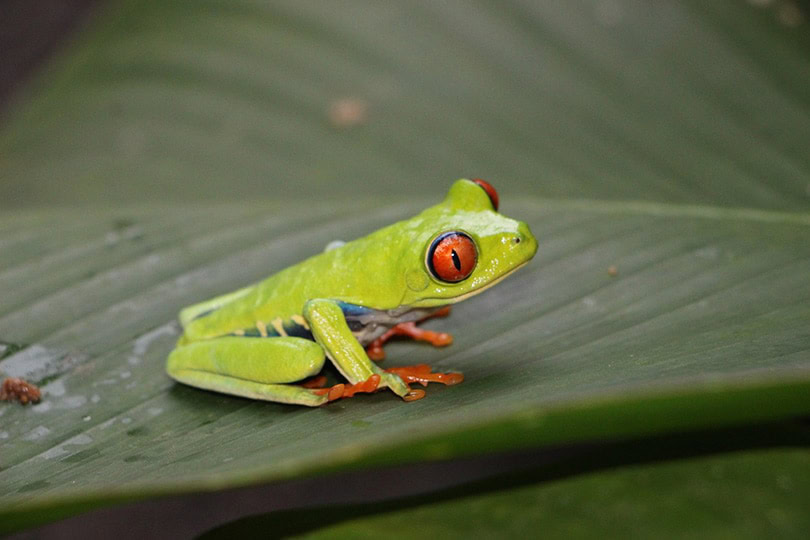
Appearance & Varieties
The big, red, bulging eyes are the first indicator that you’re looking at a Red-eyed tree frog. They have advanced defense mechanisms, and their coloring helps them blend in with their surroundings and warn predators that get too close. When they close their large eyes, their green eyelids help them blend into the green leaves of the rainforest. When they open them, the crimson-red color of their eye bulbs surprises those who are close. However, their eyes aren’t the only interesting feature.
Tree frogs have lime-green bodies with hints of yellow and blue on their sides. They can change their coloring based on their mood and some appear a darker green while others turn reddish-brown. Red-eyed tree frogs have white undersides and their feet are bright orange and red. Their footpads make them excellent climbers, so they spend a lot of time clinging to the bottom of leaves during the day and hunting for insects at night.

How to Take Care of a Red-Eyed Tree Frog
The most important aspect of owning a frog is ensuring they have everything they need to live a comfortable life. This is even truer for those that have been taken out of their natural environments and moved to a location where they wouldn’t survive in the wild. Unless you live in a rainforest, keep their terrariums as close to their natural habitat as possible.
Habitat, Tank Conditions, & Setup
If this is your first time handling a Red-eyed tree frog, learning how to keep them healthy is vital. Follow these instructions before bringing your frog home so that you can put them in their tank right away.
Tank
Even though Red-eyed tree frogs are relatively small, only about an inch or two long, they still have to have lots of room to move around. Even with one tree frog, you’ll need a 15 to 20-gallon terrarium. Because they spend their lives in the canopies of the rainforest, they prefer tanks that are tall instead of wide.
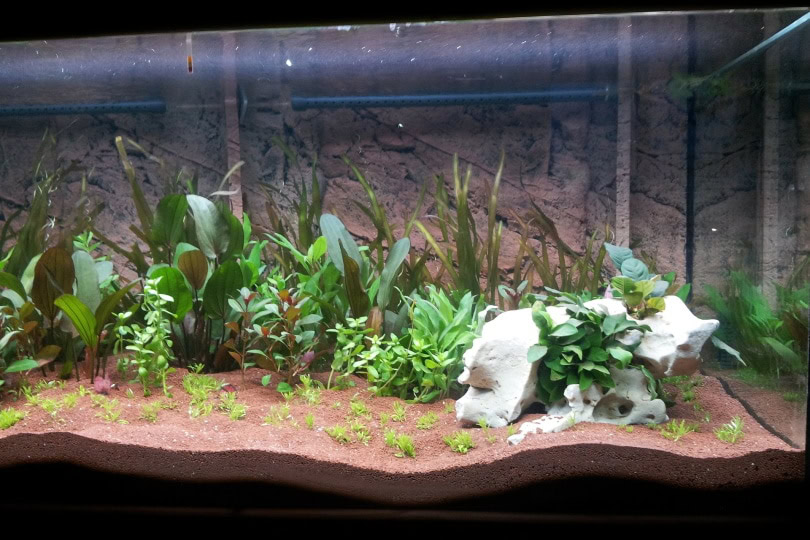
Substrate
Choosing the substrate to go inside the tank is one of the easiest choices you will make. If it is in your budget, orchid bark and shredded coconut fiber substrate are two excellent options for a substrate. However, moist paper towels are a cheaper option that helps the tank stay moist. They don’t look the best, but they get the job done in a pinch.
Climbing Plants
You can’t deny a Red-eyed tree frog’s desire to climb. Their habitats must have broadleaf plants, sticks, and substrate for them to climb and rest on. Live plants like alocasia, philodendron, and chlorophytum are some of the most popular choices. Because they are alive, you have to use lights to keep them going. For branches, use a combination of driftwood, bamboo, and cork bark.
Lighting
Lighting is crucial to the overall health of your frogs because they require UVB lights to assist in absorbing vitamin D and calcium. We recommend using Zoo Med Reptisun lamps with the addition of an LED bulb to give them light and heat. Put a digital thermometer in the tank to keep daytime temperatures between 75°F and 80°F and nighttime temperatures around 70°F.
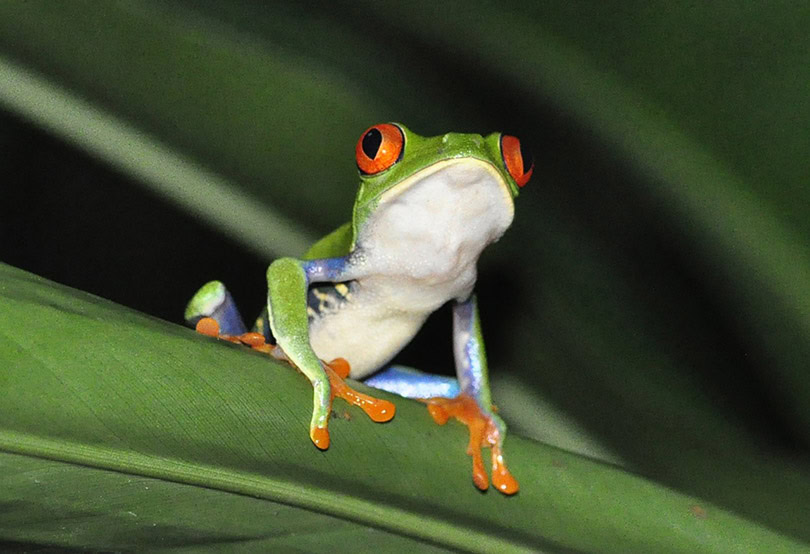
Do Red-Eyed Tree Frogs Get Along With Other Pets?
Red-eyed tree frogs are used to being prey and are nervous because of it. If you have a home with a lot of other pets, we don’t recommend allowing them near your frog’s tank. However, they can live with other tree frogs. They are social animals and keeping two to four frogs in one tank is okay as long as their terrarium is large enough to give each one their own space.
- See Also: Clown Tree Frog

What to Feed Your Red-Eyed Tree Frog
Insects are the main food source for the Red-eyed tree frog. Crickets are a staple in their diets, but they like occasional treats. Silkworms, hornworms, and roaches are all insects that your tree frog enjoys eating on occasion.
Gut-load your crickets one day before feeding them to your frog. You’ll give the crickets beneficial foods like carrots, salad, and other veggies the day before feeding them to the tree frog. Feed the frogs anywhere from three to six crickets every 2 or 3 days.
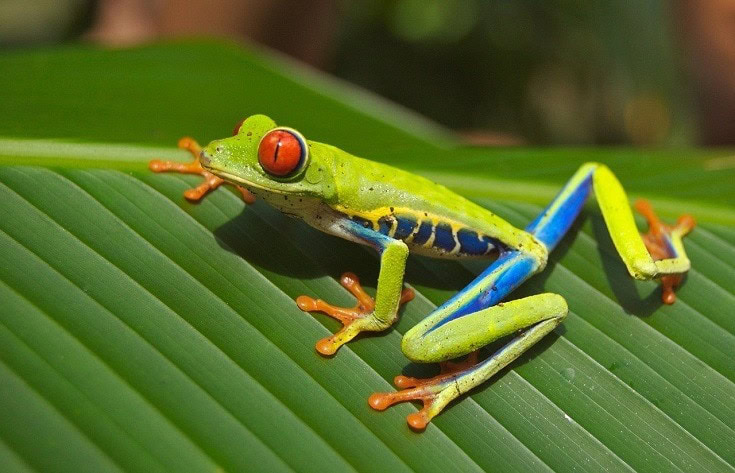
Keeping Your Red-Eyed Tree Frog Healthy
Diet supplementation and hydration are two key components to keeping your tree frog healthy. Red-eyed tree frogs do best when they have vitamin D, calcium, and other multivitamins in their diet.
Tree frogs stay hydrated not only by drinking water but by absorbing it through their skin. Keep a large, shallow dish of fresh water in their habitat and make sure it is large enough for them to lounge in but not so big that they have to swim in it. Wash the container and refill the water on a daily basis. Do not use tap water since it contains chemicals that they can absorb.
Breeding
Replicating a frog’s natural environment is crucial if you plan on breeding them. You have to mimic the winter months of the wild and transition them into the springtime for them to be ready to mate. This is achieved by placing them in a rain chamber with tropical plants above the bottom. Decrease the temperature by 5 degrees to mimic the winter and reduce their daylight by 1 or 2 hours. Once you’ve done this for 1 or 2 months, turn on the rain chamber and keep it at 80°F. Increase the temperature and daylight back to normal.
The females are larger than the males, and the males have brown pads on the bottom of their footpads. The males soon start croaking to attract the females, and mating usually takes place within a week. Females lay their eggs on leaves that overhang the water in the rain chamber, and they quickly develop into tadpoles after one week.


Are Red-Eyed Tree Frogs Suitable for You?
The Red-eyed tree frog is a good pet choice for you if you are looking for something that is a commitment but doesn’t have to be handled all the time. Frogs aren’t pets that you’ll be picking up and snuggling. Instead, people own them because they enjoy watching them move around their terrarium and appreciate their beauty from a distance.
Red-eyed tree frogs aren’t demanding pets, but they require you to care enough to feed them a balanced diet and keep their home clean and humid. If you provide a healthy environment, they’ll live long, happy lives.
- Next on your reading list: Red-Eyed Tree Frogs for Sale: Breeder List
Featured Image Credit: Vaclavsebek, Shutterstock
